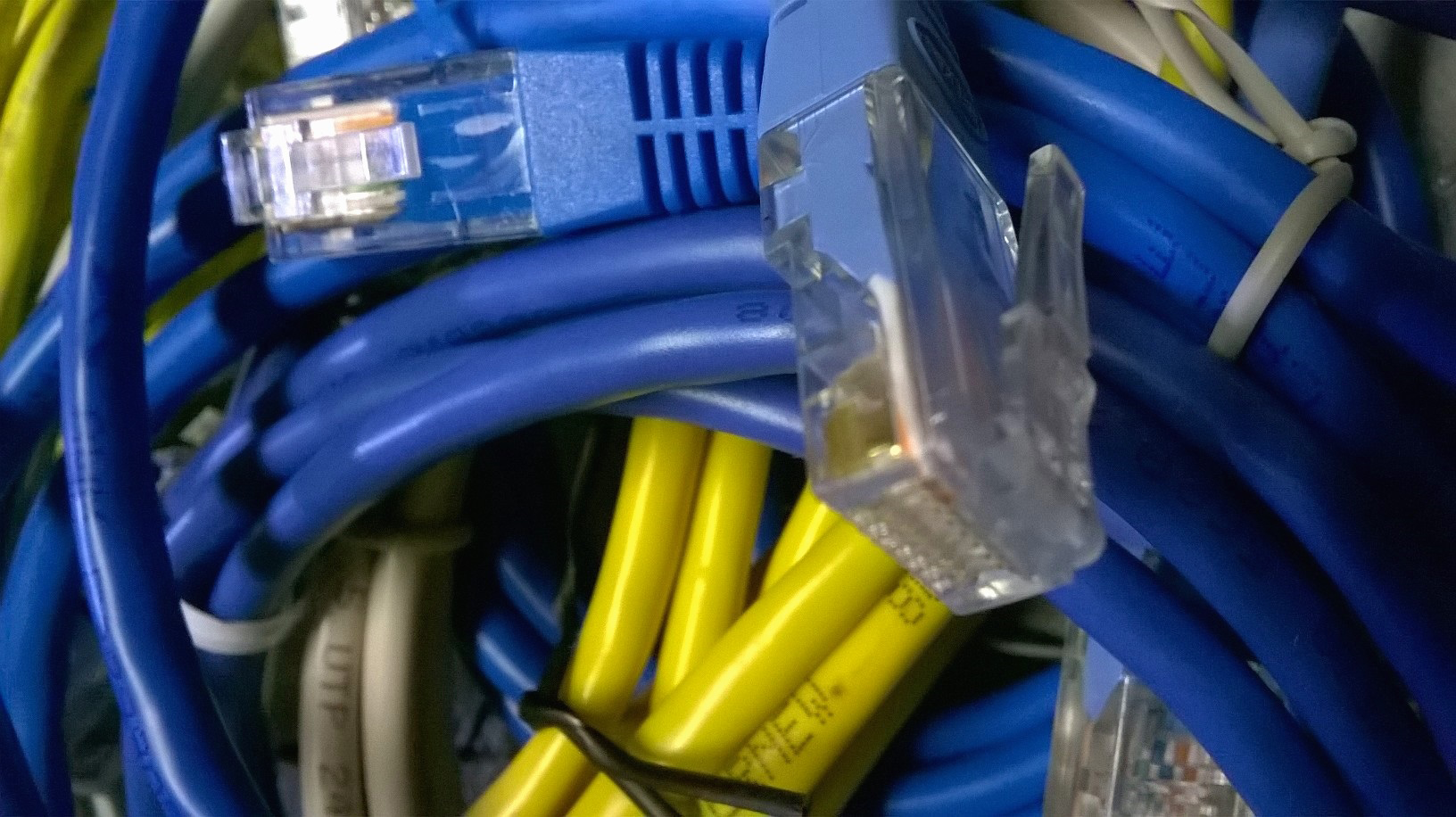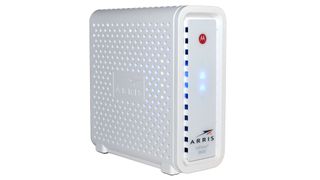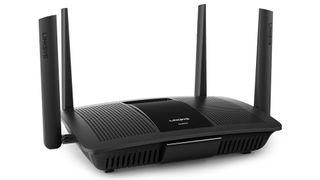The Changing Networking Standards

Your new Internet connection, and the tech powering it
Internet speeds have been on a steady increase for decades now. While users were at first satisfied with dialup speeds, this was supplanted by DSL and cable modem, bringing faster speeds over existing copper networks. To offer even more blisteringly fast performance, attention then turned to fiber networks, first from Verizon's FIOS, which peaks out at 500Mb/s. More recently, there’s been the addition of Google's Fiber, offering an ever faster 1Gb/s symmetrical connection (both upload and download), for an affordable $70 a month, to neighborhoods that are termed somewhat affectionately as "Fiberhoods."
Some years back, fiber seemed to be the way forward for delivering faster broadband. However, given fiber's disadvantages of costly deployments and the logistics to string it on poles or trench it underground, not to mention the red tape of many municipalities, attention has turned to wringing every ounce of performance from existing networks. For most of us, when we get access to Gigafast speeds from our Internet service provider (ISP), it will more likely be over good ol' copper wires than another modality.
The Last Mile
While most cable Internet providers have a fiber optic backbone, they use copper wiring for much of their deployment, including the last mile to the home and inside the home. Previous standards for cable providers to transmit data over copper wires standardized this, but recall that the cable network was originally designed to transmit a video signal to your TV. The DOCSIS standards, which stands for Data Over Cable Service Interface Specification, piggybacked the data onto the existing video network.
DOCSIS 1.0 was the original specification, with speeds topping out at a lowly 38Mb/s on the download, and an even slower 9Mb/s on the upload. This was supplanted by DOCSIS 2.0, which kept the same download speed as DOCSIS 1.0, but the upload speed increased to 27Mb/s. Both DOCSIS 1.0 and 2.0 accomplished these speeds over a single channel.

The Arris SB6183 is a modern DOCSIS 3.0 cable modem.
Moving on from the history lesson brings us to DOCSIS 3.0, which is the standard currently in use by the cable ISPs. When you purchased your new cable modem, you made sure it was DOCSIS 3.0–compliant, so that you would get the correct speed from your ISP. The big advance of DOCSIS 3.0 is that it specifies multiple channels that are bonded together to produce better performance. The specification calls for a minimum of four channels on the download side, but has no upper limit on the total number, with eight being a common number of channels on today’s modems. Each separate channel is capable of transmitting what DOCSIS 2.0 could do on its one puny channel of 38/27Mb/s, so DOCSIS 3.0 on an eight-channel modem has a theoretical download speed that exceeds 300Mb/s.
While most would not complain about an Internet connection of 300Mb/s these days (keeping in mind the FCC defines broadband as a puny 25Mb/s down and 3Mb/s up), with fiber hot on their heels, cable providers are upgrading their networks this year, for planned deployments in 2016 that will undoubtedly go on for some years after.
The biggest gaming news, reviews and hardware deals
Keep up to date with the most important stories and the best deals, as picked by the PC Gamer team.
The next stage in cable upgrades will be to DOCSIS 3.1 (although some argue that it should have been called DOCSIS 4.0). This new standard uses orthogonal frequency division multiplexing (OFDM), which encodes data onto multiple subcarriers to simultaneously increase data throughput by approximately 50 percent, while reducing interference. The separate channels of the previous DOCSIS specs get tossed, and this allows a significant increase in bandwidth. When fully implemented, speeds promised are 10Gb/s on the download side, with a 1Gb/s upload (!), which would be warp-speed fast and allow users to eat up their Comcast data caps in mere seconds.
Don’t think that DSL (digital subscriber line) connections are going to remain at the current speeds either. While we would not wish the lowly current speeds of DSL on our worst enemy, there is hope for this aging network. Originally designed for voice communication, DSL is overdue for a rebirth. With a new technology known as G.fast, DSL users are promised to enjoy download speeds of 1Gb/s over shorter distances up to a max of 500 meters. Expect to see the first deployments of this in 2016 as well. Maybe with that, DSL users can finally stop complaining about their janky Internet connection, and why did that fiber ISP stop building out just a few blocks short of their home.
The Need for Faster Wi-Fi
With fiber, cable providers, and even DSL offering speeds up to 10Gb/s in the not-so-distant future, home networks will have reason to upgrade. While in most cases, that older 802.11n router will have speeds that exceed most users' current Internet connection, this older gear will require upgrading to keep up with the demands of the promised faster speeds. In addition, the problem will be compounded by multiple simultaneous users, and more demanding data streams, such as video streams like Netflix.

The Linksys EA8500 router. This is the first router to market that features MU-MIMO technology to enhance the link to single antenna clients.
The current Wi-Fi standard is 802.11ac, which was approved in January of 2014 with a proliferation of products throughout the year. The next upgrade to 802.11ac is termed “802.11ac Wave 2,” with products slowly coming out throughout the second half of 2015, for example the Linksys EA8500 router. This 802.11ac Wave 2 features Multi User-MIMO (MU-MIMO) technology. Recall that MIMO is “multiple-input, multiple-output,” a technology to send additional data streams taking advantage of multipath propagation. Beamforming is a related technology of using the multiple antennae to focus and increase the signal to a client.
There are limitations, in that the current beamforming tech requires multiple antennae on both the router and client side to accomplish this, which currently leaves smaller devices, e.g., smartphones, out of the game. With MU-MIMO, via the multiple antennae on the router, and the software “Wave 2” implementation, the router will now be able to optimize the signal and the data stream to single-antenna devices. Think of that next time you want to watch YouTube on your smartphone. MU-MIMO is also designed to keep up with the increasing array of smaller devices that are competing for your router’s signal.
Future Wireless Standards
The next Wi-Fi standard, 802.11ad, popularly known as WiGig, seeks to add a third frequency to the current 2.4GHz and 5GHz equation. This frequency is 60GHz, and is an unlicensed part of the spectrum, just free for the taking. Samsung has led the charge on this, and has promised speeds of 4.5Gb/s, although the range is expected to be limited to about 30 feet due to the characteristics of such a high frequency with limited penetration and propagation. Products are expected later this year for this sort of “Bluetooth on steroids” if you will.
Beyond 802.11ad will be 802.11ah, which seeks to add another frequency for even more bandwidth. Back in the 1990s, cordless phones used the 900MHz frequency to communicate. These days, this spectrum is largely unused, with the modern DECT 6.0 cordless phones operating on the 1.9GHz frequency. The 900MHz frequency, compared to the current Wi-Fi 2.4GHz, has roughly twice the range, and also excels at penetrating obstacles such as walls. This “sub-gigahertz” frequency has the additional benefit of low power consumption. These characteristics will make 802.11ah ideally suited for the low-power devices of the Internet of Things. The 802.11ah standard is expected to make its debut in 2016.
The final Wi-Fi standard on the horizon is not expected until 2018 or 2019, although some draft products may appear earlier, as was seen with earlier generations of Wi-Fi. It is known as 802.11ax. With the initial goal of four times the speeds of 802.11ac, it may end up delivering maximum speeds of 10Gb/s, and real-world speeds of 2Gb/s. The secret sauce at work is MIMO-OFDA, where the OFDA is orthogonal frequency division multiplexing. MIMO-OFDA will work on the 5GHz frequency of current 802.11ac devices that currently has four simultaneous channels, and increase it by having multiple subchannels with slightly different frequencies. “Orthogonal” refers to the frequencies being used at right angles to each other to pack them in closer, facilitating more data to be transmitted simultaneously.
If all this sounds a little familiar, yes, it does look like the wireless cousin of what DOCSIS 3.1 is doing over coaxial cable. And of course, with 10Gb/s of Wi-Fi bandwidth on tap from your router, those cable speeds will start to look a little slow again, with users clamoring for faster Internet speeds—and thus the cycle continues. As we progress toward faster broadband, as well as faster Wi-Fi speeds and range on additional wireless frequencies, there are some impressive technology rollouts queued up for the next five years and beyond.
Most Popular

